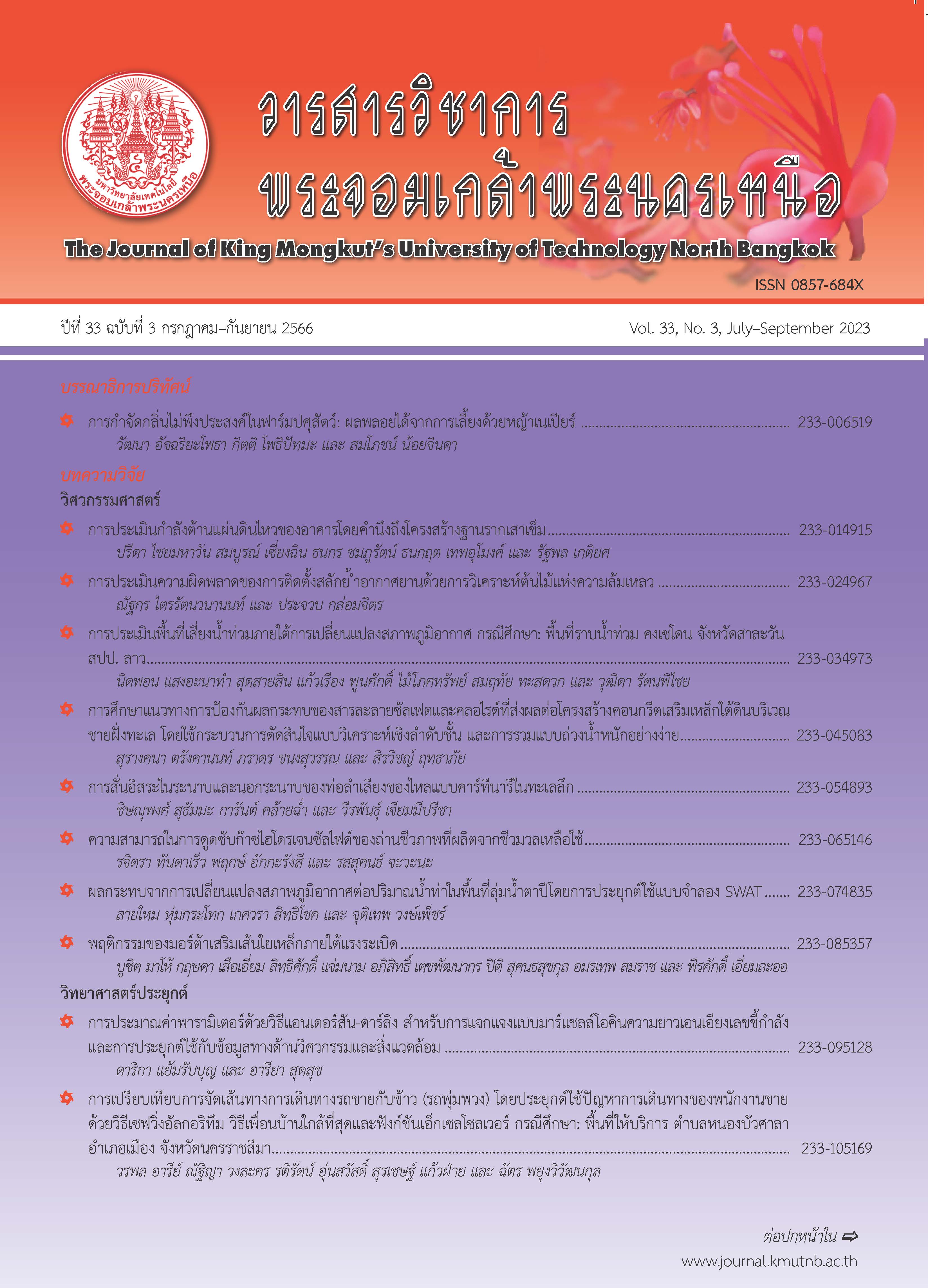The Development of a Bio Cellulose-based Coating From Banana Stem Pulp and the Characteristics Resulted in Digital Printing Systems
Main Article Content
Abstract
Cellulose-based materials have generated wide interest in the researchers because they are an environmentally-safe innovation and can effectively develop from various raw materials. This research was designed to develop a bio cellulose-based coating extracted from banana stem pulp (Musa sapientum L.) of both unbleached cellulose-based coating (UBCC) and bleached cellulose-based coating (BCC) through the coating method on a paper substrate and to study characteristics that resulted in the quality of digital printing system. The bio cellulose-based coating consisted of 10 %wt. cellulose of banana stem pulp combined with methylcellulose and glycerol of 10 and 5.0 %wt. of cellulose, respectively. The coating was prepared and coated on paper and the printing was tested with electrophotography (laser) and inkjet printing systems. The results revealed that UBCC and BCC appeared in gray and beige colors of which their viscosity values were close to each other. Features of UBCC and BCC fabricated by the wet film with the thickness of 120 μm coating showed differences in thickness of dry film at 19.34 ±0.58 and 23.70 ±1.47 μm, respectively. The BCC’s surface was transparently smoother than that of UBCC when observed by scanning electron microscope (SEM). So, the gloss increase of BCC was associated with the dry film thickness whereas the gloss of UBCC was gradually decreased. With the coating of the wet film thickness of 12 μm, the gloss value of BCC and UBCC were 4.07 ±0.15 and 1.53 ±0.06 GU, respectively. Printed with Inkjet printing, BCC also distinctly revealed color gamut better than uncoated paper. The result of the BCC color gamut was approximate to the uncoated paper when printed with electrophotography. Furthermore, the color properties of printing, i.e. color, font, and line were also reported in this article.
Article Details

This work is licensed under a Creative Commons Attribution-NonCommercial-NoDerivatives 4.0 International License.
The articles published are the opinion of the author only. The author is responsible for any legal consequences. That may arise from that article.
References
H. Kipphan, Handbook of Print Media, Berlin: Springer, 2001.
M. Sharma, R. Aguado, D. Murtinho, A. J. M. Valente, A. P. M. De Sousa, and P. J. T. Ferreira, “A review on cationic starch and nanocellulose as paper coating components,” International Journal of Biological Macromolecules, vol. 162, pp. 578–598, 2020.
F. An, K. Fang, X. Liu, C. Li, Y. Liang, and H. Liu, “Rheological properties of carboxymethyl hydroxypropyl cellulose and its application in high quality reactive dye inkjet printing on wool fabrics,” International Journal of Biological Macromolecules, vol. 164, pp. 4173–4182, 2020.
S. Sibaly and P. Jeetah, “Production of paper from pineapple leaves,” Journal of Environmental Chemical Engineering, vol. 5, pp. 5978–5986, 2017.
P. Tumthongkhum, N. Buataengtansakul, R. Chollakup, A. Jarerat, S. Netramai, and W. Kongtud, “Development of paper from oil palm empty fruit bunch and mesocarp, and paper mulberry fibers, with chitosan coating,” RMUTP Research Journal, vol. 13, no. 2, pp. 37–49, 2019 (in Thai).
K. Dhali, M. Ghasemlou, F. Daver, P. Cass, and B. Adhikari, “A review of nanocellulose as a new material towards environmental sustain ability,” Science of the Total Environment, vol. 775, pp. 145871, 2021.
P. Samyn, A. Barhoum, T. Öhlund, and A. Dufresne, “Review: nanoparticles and nanostructured materials in papermaking,” Journal of Materials Science, vol. 53, pp. 146– 184, 2018.
L.V. Hai and Y. B. Seo, “Properties of nanofibrillated cellulose prepared by mechanical means,” Cellulose Chemistry and Technology, vol. 52, no. 9, 741–747, 2017.
S. Khankaew and A. Photirattanasangchai, “UVA-monitored, cellulose-based binder colorimetric security printing ink,” The Journal of KMUTNB, vol. 31, no. 3, pp. 156–166, 2021 (in Thai).
M. B. K. Niazi, Z. Jahan, S. S. Berg, and Ø. W. Gregersen, “Mechanical, thermal and swelling properties of phosphorylated nanocellulose fibrils/PVA nanocomposite membranes,” Carbohydrate Polymers, vol. 177, pp. 258–268, 2017.
R. H. Leach and R. J. Pierce, The Printing Ink Manual, 5th ed. Melbourne: Springer, 2009.
F.J. Francis, “Colorimetry of food,” in Physical Properties of Food, Westport: AVI Publishing, 1993, pp. 105–124.
M. Bertalmío, Vision Models for High Dynamic Range and Wide Colour Gamut Imaging, London: Academic Press, 2020, pp. 131–155.
X. Cao, Y. Wang, H. Chen, J. Hu, and L. Cui, “Preparation of different morphologies cellulose nanocrystals from waste cotton fibers and its effect on PLLA/PDLA composites films,” Composites Part B: Engineering, vol. 217, 2021.

